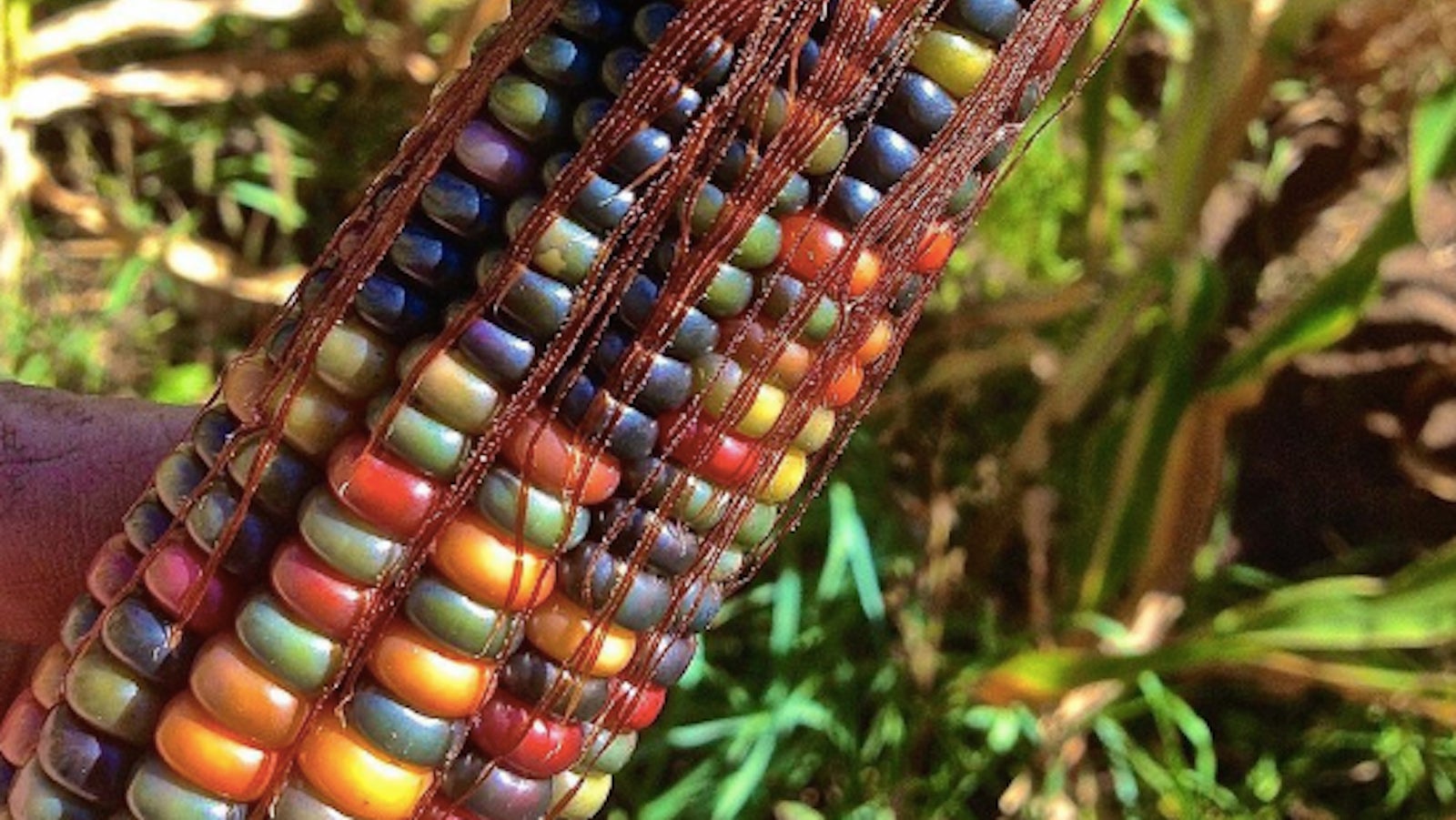Behold! The most beautiful and admired ear of corn in all the world
You might think you understand what beauty is. But you don’t, not really—not until you have gazed upon this ear of corn.


You might think you understand what beauty is. But you don’t, not really—not until you have gazed upon this ear of corn.
How can such wondrous majesty exist in nature? you must be asking yourself, clutching your hair with wild admiration, while tearing down the photos from your walls to clear space for your new gallery of obscenely gorgeous corn.
Well! It’s actually a very interesting tale.
Glass gem corn is a perennial favorite on social media, having awed scores of Facebook and Reddit users as far back as 2012. Created by a part-Cherokee Oklahoma farmer named Carl Barnes, who died in 2016, the rainbow-hued grain came about after Barnes began exchanging ancient traditional seeds with members of Native American tribes as a way of connecting with his ancestral roots.
Over the years, Barnes saved and replanted the seeds from the most colorful cobs in his crops—breeding for beauty as well as heritage. To the best of Barnes’ recollection, the glass gem corn is the product of “crossings of Pawnee miniature corns with an Osage red flour corn and also another Osage corn called ‘Greyhorse,'” according to his protégé, Greg Schoen, who wrote about the story of the corn’s invention for Mother Earth News back in 2012.
Barnes shared the glass gem corn seeds with Schoen in the mid-1990s, who in turn passed them along to friends and strangers over the years—including Bill McDorman, a former director of Native Seeds/SEARCH, a nonprofit organization dedicated to preserving traditional crop seeds in Tuscon, Arizona, which now sells the seeds for $3.25 per packet. Since glass gem corn has a tough outer layer, it’s not the sort of thing you’ll want to toss on the grill. But it makes for good cornmeal or (sadly monochromatic) popcorn.
The glass gem corn’s visual appeal has also turned it into an unexpected ambassador for the importance of biodiversity. “For millennia, people have elegantly interacted with the plants that sustain them through careful selection and seed saving,” Native Seeds explains in a blog post. “This process, repeated year after year, changes and adapts the plants to take on any number of desirable characteristics, from enhanced color and flavor to disease resistance and hardiness.”
The rise of industrial agriculture has made the world’s crops increasingly homogenous, which poses risks of everything from food shortages to economic crashes. And so glass gem corn is more than just a sexy social-media star—it’s a way to get people interested in the myriad benefits of cultivating diverse crops.